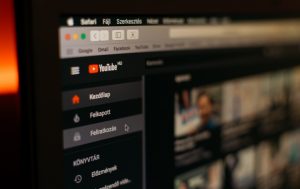Social media is not only a platform to entertain, but also a useful tool that students could learn from groups and communities. It has become an indispensable channel where I acquire additional knowledge and share my opinions with members in the same study group or with those who have a common interest. It is also helpful to counteract the increasing price of textbooks by providing additional knowledge that students truly need. Google Doc and YouTube are two examples of a learning community where I get encouraged and supported by my ‘mates’ to achieve better study outcomes.
Google Doc is an extremely useful learning tool that supports students to build a group where they could share ideas and edit files even when they were separated by space and time (Major, 2015). It is an online platform that students could upload their files such as Word, Excel and PowerPoint Presentation, and edit a file by different group members at the same time. Each amendment is noted with real-time changing marks. If there are only two students sharing and collaborating a Word file, email would be enough to achieve. However, I found it is difficult to gather files and ideas from more than two people. It usually ends up with a work full of mess and misunderstandings. On Google Doc, students are able to see where and when the file was edited by whom, which gives every user a clear view to stay on the same page. The consecutiveness and logic brought by google doc are critical to give students a sense of encouragement and support when they work in a group. Moreover, Google Doc is supporting the student with a serious of other Google services such as Google Drive, Google Translate as well as Google Scholar. The integration of these services could also maximize the effect of social media in group study.

Photo by Szabo Viktor on Unsplash
As another of Google’s service, YouTube is also a handy tool/platform that I like to utilize when I want to learn additional knowledge. YouTube is an online video-sharing website that people could upload original video and set up their own channel like a video blog. There are enormous KOLs who are actively sharing academic knowledge and building their own community to spread open topics to discuss with people who have a common interest. Their videos could be relative to a lot of topics including food, travel, lifestyle or pet, etc. I am interested in geography and engineering studies so that I found a few KOLs and channels to follow and subscribe, including Geography Now! and Engineering Explained channel. Geography Now! is a series of short video introducing countries and regions around the world. By watching this channel, I have learned a lot about different cultures and history that developed my interest in exploring corners and natural phenomena. In addition, I am keen to share my thoughts, ideas, and experiences in their comment area and community, and discuss and exchange with other users. The interaction encourages us to acquire additional knowledge in a more interesting way rather than reading textbooks. I have been using YouTube to learn for a couple of years and I’m still into it.
Using social media to acquire knowledge is also a substitute for traditional textbooks and its accessional learning materials, and it might be able to lower the unreasonable price of textbooks. Nowadays, textbooks are always sold with exclusive access of online materials containing additional context. This makes the price of textbooks dramatically increased during the last two decades, even much higher than the inflation rate (Stommel, 2018). Using social media and communities is a good way to search and discuss the content in textbooks, which might bring even more benefits than the bundled materials do. Along with the rising of social media, the bundled contexts would be less valuable and important for teachers and students so that presses should drop the price in order to keep competitive. I believe it is a process of education that gives readers time to find their own channel to efficiently acquire knowledge, rather than paying something they don’t need.
In summary, online platforms are helpful to build study communities that encourage and support students to acquire knowledge in a more efficient way. Google Doc and YouTube are good examples that showcase how modern platforms enable a group of people to be beneficial from social media when they are learning something. Google Doc allows me to share my work in my study group without the limit of time and space; YouTube provides users a place where they could learn and share in the communities. Students are utilizing social media as a channel to counteract the increasing price of textbooks. Being an educator, I would encourage my students to apply social media into their study, instead of forcing them to buy books and online materials they don’t need.
Bibliography:
Morris, Sean Michael, and Jesse Stommel. 2018. An Urgency of Teachers: The Work of Critical Digital Pedagogy. Hybrid Pedagogy, Inc.
https://urgencyofteachers.com/